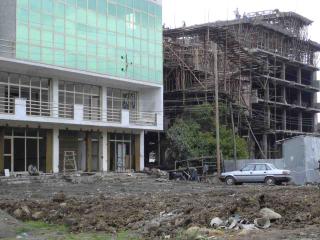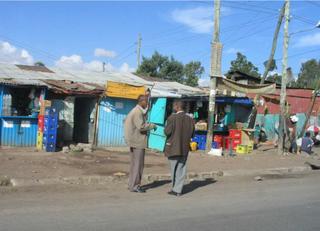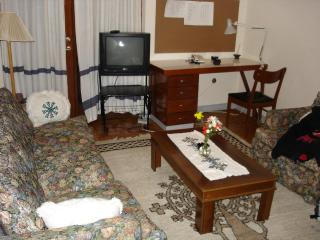Border town strangled by Ethiopia-Eritrea tensions


By Ed Harris
SENAFE, Eritrea (Reuters) - Before the war with Ethiopia, buses and trucks rumbled through Eritrea's border town of Senafe, shuttling daily between Asmara and Addis Ababa on a thriving trade route.
The cross-border business between the two capitals blessed Senafe with the bustling feel of a frontier town, as hundreds of truckers and travelers passed through each day filling hotels and patronizing local businesses.
But on a recent cold morning, the buses drove only north toward the capital Asmara, passing a few well-wrapped Eritreans as the roosters sang their dawn chorus.
There are far fewer trucks, the hotels are empty and buildings along its small main street lie in ruins.
Though the 1998-2000 border war that killed 70,000 may be over, Senafe is proof its economic and social impact is still felt.
Since the border between the two former foes has been sealed since the war, Senafe no longer enjoys its status as a staging post between Eritrea's ports and landlocked Ethiopia's markets.
Now it's a terminus.
A short walk away from the bus stop and empty hotels, a shopkeeper is passing the time with her granddaughter who plays by the crooked wooden shelves stacked with candles, salt, razor blades and dates.
When the Ethiopian soldiers invaded, she fled north, returning much later to see that the four walls of her shop were still standing but everything else was gone.
"We were happy to come back - even though our furniture was not here," she says.
NEW CONFLICT?
Less than five years after the war ended, the shopkeeper reflects on Senafe's decline. "Everything has got expensive," she said, refusing to give her name in apparent fear of possible reaction by Eritrean authorities to any negative comments.
"You could get a chicken for three nakfa before, now you would be lucky to get it for 100," she says.
Down the street, further from tents at the edge of town filled with still-displaced Eritreans, the lights from a photographic shop light up an otherwise dark street, and Tigrinyan music invites in the customer.
"Before the third invasion, I would finish three rolls (of 36 photos) in a day. Now it is less than one," said a young photographer working there, also unwilling to give his name.
Down at the market, a madman stands smiling in the dust, watching the occasional horse and cart slowly trundle by.
"The main problem is that the economy is based on trade," says a teacher living here for more than a year, unable to explain how people would survive if it was not for remittances from relatives abroad or government aid.
In the meantime, though, another war could start, observers say, despite around 3,300 U.N. peacekeepers who police the border.
Failure to demarcate the border remains a major sticking point in Ethiopian-Eritrean relations.
When the two countries signed a peace agreement in December 2000, they agreed that an independent boundary commission would tell them where their boundary should be.
But when the Boundary Commission finally produced its report in April 2002, Ethiopia rejected the ruling.
Now Eritrea refuses to negotiate on an international agreement. Ethiopia says it insists on dialogue before demarcation, but in practice has shown little desire to do so.
WHOLE ECONOMY DAMAGED
Just as the conflict has decimated Senafe trade, so it has cut swathes into Eritrea's needy economy, destroying infrastructure, leaving land mines in some of the most fertile areas and forcing 1.1 million people out of their homes.
At a stroke, it cut off multi-million dollar exports to Ethiopia, formerly Eritrea's main trading partner.
Eritrea still maintains a wartime economy with an estimated 300,000 people either doing national service or serving in the military out of an estimated 3.6 million population.
And defense spending dominates the national budget at 17 percent of GDP between 2001 and 2003, according to IMF figures.
Source: REUTERS








